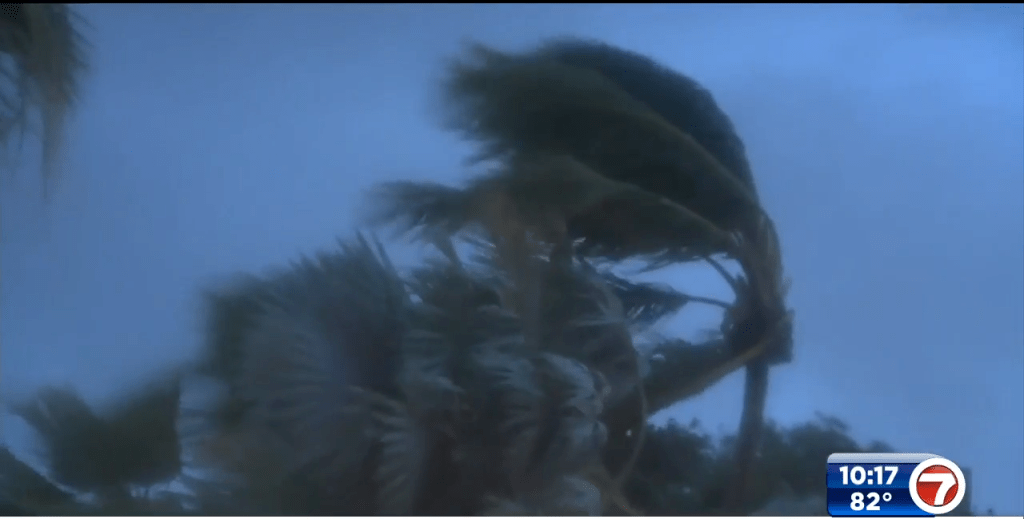BRADENTON, Fla. (AP) — Hurricane Ian made landfall in Southwest Florida at the worst possible time for many in the agricultural community, cutting a path through Florida’s citrus belt and hitting tomato fields just before the start of seasonal harvests.
Ian impacted 375,300 acres of citrus groves — nearly every acre where oranges are grown in Florida — and 153,638 acres of vegetable and melon crops, among others, Christa Court, a University of Florida economist, said in a Zoom press conference Tuesday.
Ian’s damage to Florida’s $8.1 billion agricultural sector is estimated at between $787 million and $1.56 billion, University of Florida economists said.
Damage estimates by county won’t be available until mid-November, but those in Manatee County’s agricultural community say local damage is significant.
“We took a big hit,” Gary Reeder, president of the Manatee County Farm Bureau, said this week of the tomato, watermelon and citrus crops as well as Dakin Dairy, which lost more than 200 head of cattle and suffered significant structural damage.
The Myakka City community rallied around Dakin Dairy with chainsaws and other equipment after the storm to aid recovery efforts.
“We are slowly regaining our footing and we are milking again, delivering milk again and we have fresh milk in the market. As we recover, regroup and restructure, keep checking back with us. We feel so fortunate to be part of this community,” Courtney Dakin posted recently on the dairy’s Facebook page.
THE CITRUS CROP
Although Manatee County is not one of Florida’s top citrus growing counties, it is home to juice maker Tropicana.
Manatee County has an estimated 12,807 acres of citrus and most of it, like 90% of the Florida orange crop, goes into juice production.
Nearby Polk, Highlands, DeSoto and Hendry counties all have far larger citrus crops.
Florida’s citrus crop has been declining for decades because of diseases, such as greening and canker. Greening, also known as Huanglongbing disease, is a bacterium that kills the tree and is spread by a tiny insect, the Asian Citrus Psyllid.
Tropicana has been turning increasingly to imports, and the company earlier this year stopped processing OJ at its Fort Pierce plant, consolidating that function in Bradenton.
SeaPort Manatee saw 520,212 tons — or nearly 125 million gallons — of fruit juice imports in the latest 12-month period, up 14% from a year earlier.
“There is a tremendous amount of fruit on the ground,” Reeder said of Manatee County groves.
HIGHER PRICES FOR TOMATOES
Bob Spencer, president of West Coast Tomato in Palmetto, said he expects his crop will be down 50% because of Ian.
Damage to Manatee County’s tomato crop, historically the largest in Florida, will have an impact on consumers with higher prices likely.
Much of Manatee County’s tomato crop goes to food services, such as cafeterias and fast food restaurants in the eastern United States, and retail stores.
West Coast Tomatoes was planning to start its first harvest Thursday, and some of the crop may show evidence of wind burn, which won’t affect the taste, Spencer said.
“You will see higher prices in the stores because of this,” Spencer said.
Jones Potato Farm was more fortunate. “We had to replant about 20 aces of green beans in Parrish,” Leslie Jones said.
“We just started planing potatoes. We feel really blessed.”
HORTICULTURE HIT HARD BY IAN
Dennis Cathcart, owner of Tropiflora, 3530 Tallevast Road, and Ralph Garrison, owner of Suncoast Nursery, 6012 18th Ave. E., have both been in the nursery business for decades.
They say the damage from Ian is the worst they have seen from any storm.
“It’s a vast amount of damage. Seven greenhouse structures were destroyed and about all of the others were damaged,” Cathcart said of his operation specializing in bromeliads.
The plants are essentially OK, but its difficult reaching them because of damage to structures on the property.
“Our irrigation system got shredded, too,” Cathcart said.
“We have had hurricane damage a number of times with Charlie, Irma and others, but nothing like now. This is worse than all of the damage we have had over the years,” he said.
Tropiflora’s bromeliads go to collections at botanical parks and zoos around the world, including Garden by the Bay in Singapore, he said.
Suncoast Nursery’s Garrison says that what happened at his business sums up the life of a farmer.
Like Cathcart, Garrison said he has never seen so much damage from a single storm.
“Not this much, no sir. This is about a $1.6 million loss,” he said. “It’s frustrating. I don’t know if at this age and day if I will rebuild or not.”
Compounding the challenge is the sharply higher cost of replacement materials and the labor shortage.
CATTLE RANCHING
Jim Strickland, past president of the Florida Cattlemen’s Association, owner of Strickland Ranch and manager of Blackbeard’s Ranch, had one word for the aftermath of Ian: “fences.”
“My crew has been working around the clock,” mending fences, he said. “It’s been hard work, it’s been wet. If I told you we had 1,000 trees on fences, I would not be lying.
“We have all the chain saws and swamp buggies and are ready to go,” he said, adding that his biggest worry is that cattle might wander onto roads, posing a danger to drivers.
“As soon as I saw my family and friends were safe after Ian, we began working on fences,” he said.
Some of that help came from outside the Bradenton area, including shipments of fence posts and wire, and several cowboys from North Carolina, he said.
Copyright 2024 The Associated Press. All rights reserved. This material may not be published, broadcast, rewritten or redistributed.

